I Drove One Of The World's Most Advanced Driving Simulators And I Nearly Threw Up
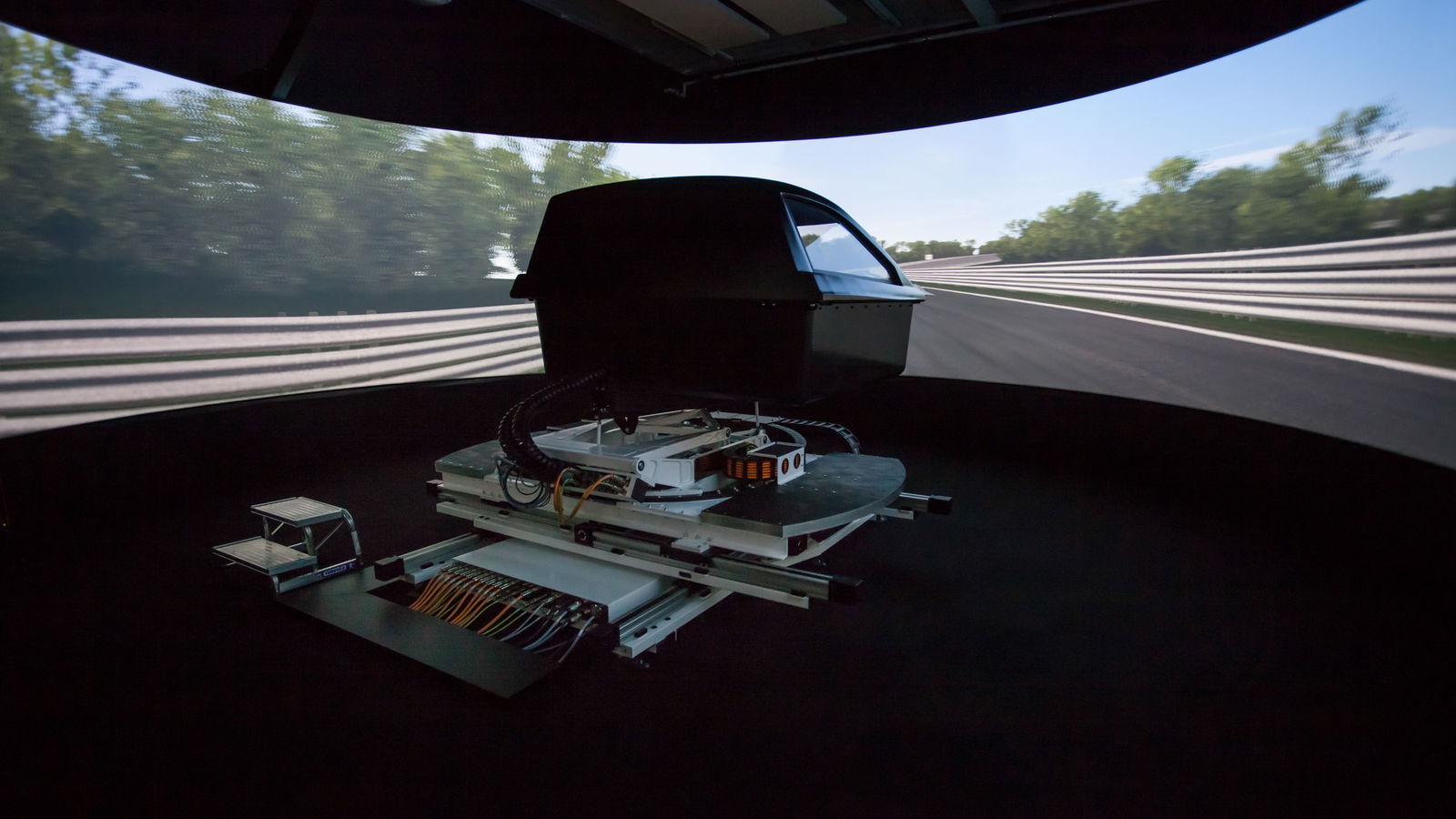
“The great thing about our driver-in-the-loop simulators is that they virtually eradicate motion sickness in the operator, which is a big problem faced by traditional, hydraulically-operated simulators.”
I’m sat in the meeting room of Ansible Motion’s headquarters at the Hethel Engineering Centre, just a stone’s throw from Lotus - the relavence of which will soon become apparent - listening to Phil Morse, Ansible’s Technical Liaison, as he explains how this driver-in-the-loop simulator works. I get motion sickness really easily - whenever I’m a passenger in a car, I’ll feel ill - and these simulators are notorious for making people feel sick. His words are music to my ears.
I can’t relax too much though, as Morse’s tecnhical descriptions are rather difficult to decode. To be fair, once you get to grips with how it all works it’s quite simple, as this system puts emphasis on tricking the mind rather than trying to recreate realistic movements.
Traditional simulators - which were originally designed for the aviation industry and have been adapted for road use - use hydraulic arms that work well enough in the skies, but there is some inherent latency involved with the kind of quick changes in direction cars can undertake. The easiest way I can think to translate the problem is to ask you to imagine you’re running, and then try to change direction. You’d plant your foot, and your leg would have to soak up the weight before you could push off again.
So what’s different here? Ansible Motion’s setup has been designed for road use from the very beginning, and focuses on tricking the vestibular system, which is located in your inner ear and controls the perception of up, down, left, right, forwards and backwards, also known as the six degrees of freedom. Instead of the traditional ‘hexapod’ setup, this simulator cabin sits on planes that move longitudinally, horizontally and rotationally, as well as on three additional axes, which together simulate the six degrees. They also work independently, helping to reduce latency.
Motion sickness comes from what the body feels not tallying up with what the brain is expecting from its visual cues, so even the smallest delays in response can be enough to induce sickness. By getting rid of heavy hydraulics systems, and instead focusing on tricking the mind, Ansible Motion’s system can - theoretically - make the user feel like they’re really in the virtual world, eradicating motion sickness in the process.
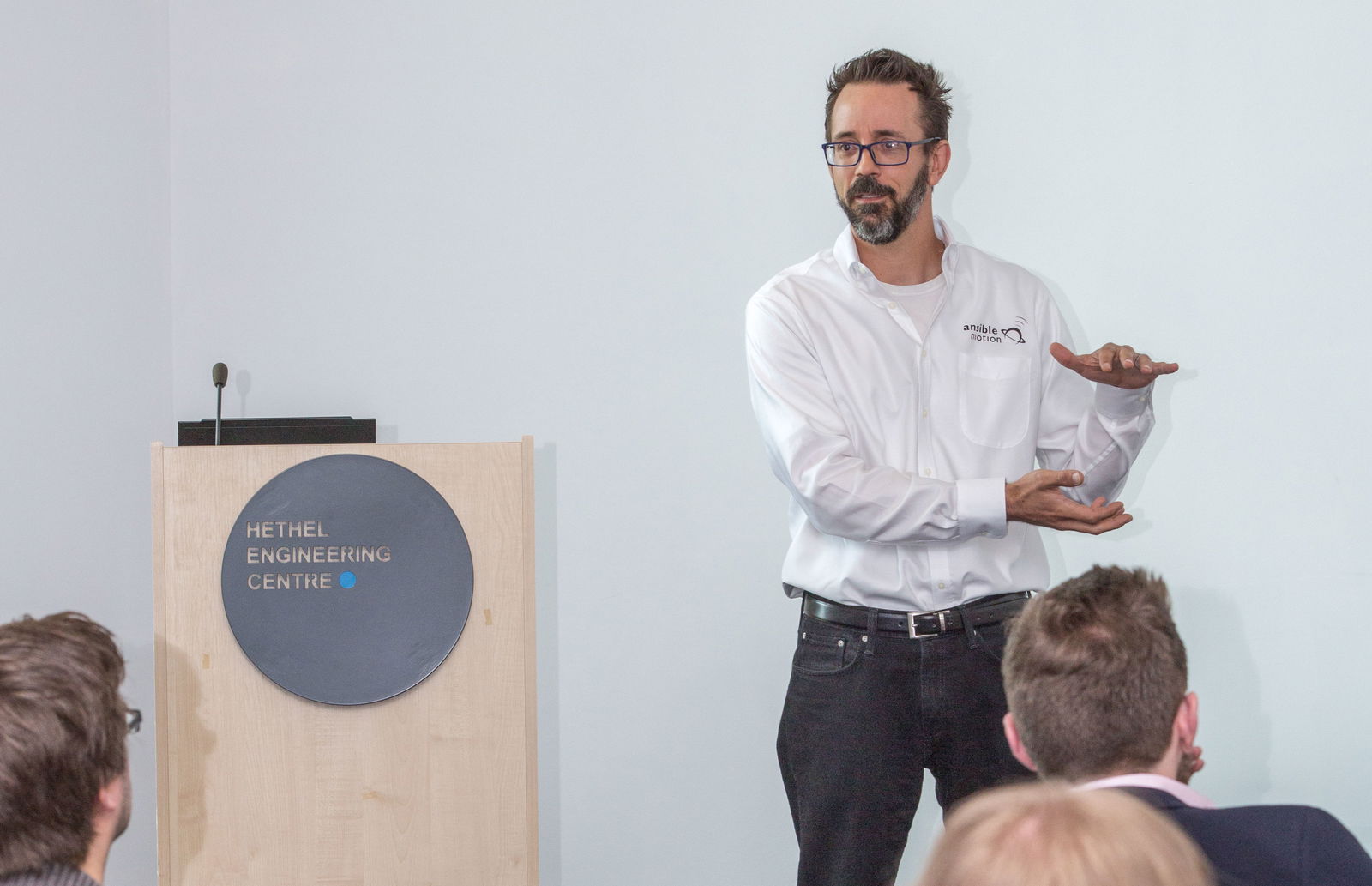
Ansible isn’t trying to build the world’s coolest bedroom gaming setup - this kit is designed for engineers to use as a quick, easy way to analyse how well systems such as stability or traction control are working. If the engineer senses something isn’t right, they can tweak a setting and head off again. The possibilities are nearly infinite; tyre manufacturers could test different compounds, and Ansible can even simulate the feel of different gear changes. It reckons validation time for such components can be cut from about 10 days to just three.
To prove how serious the team is, it’s made up of engineers who’ve worked at the world’s biggest manufacturers and race teams, and who’ve ditched a life working with ‘real’ cars in favour of pioneering this digital development technology. Most of the crew know each other from their days working together at Lotus, so Ansible Motion has close ties to its Hethel neighbour.
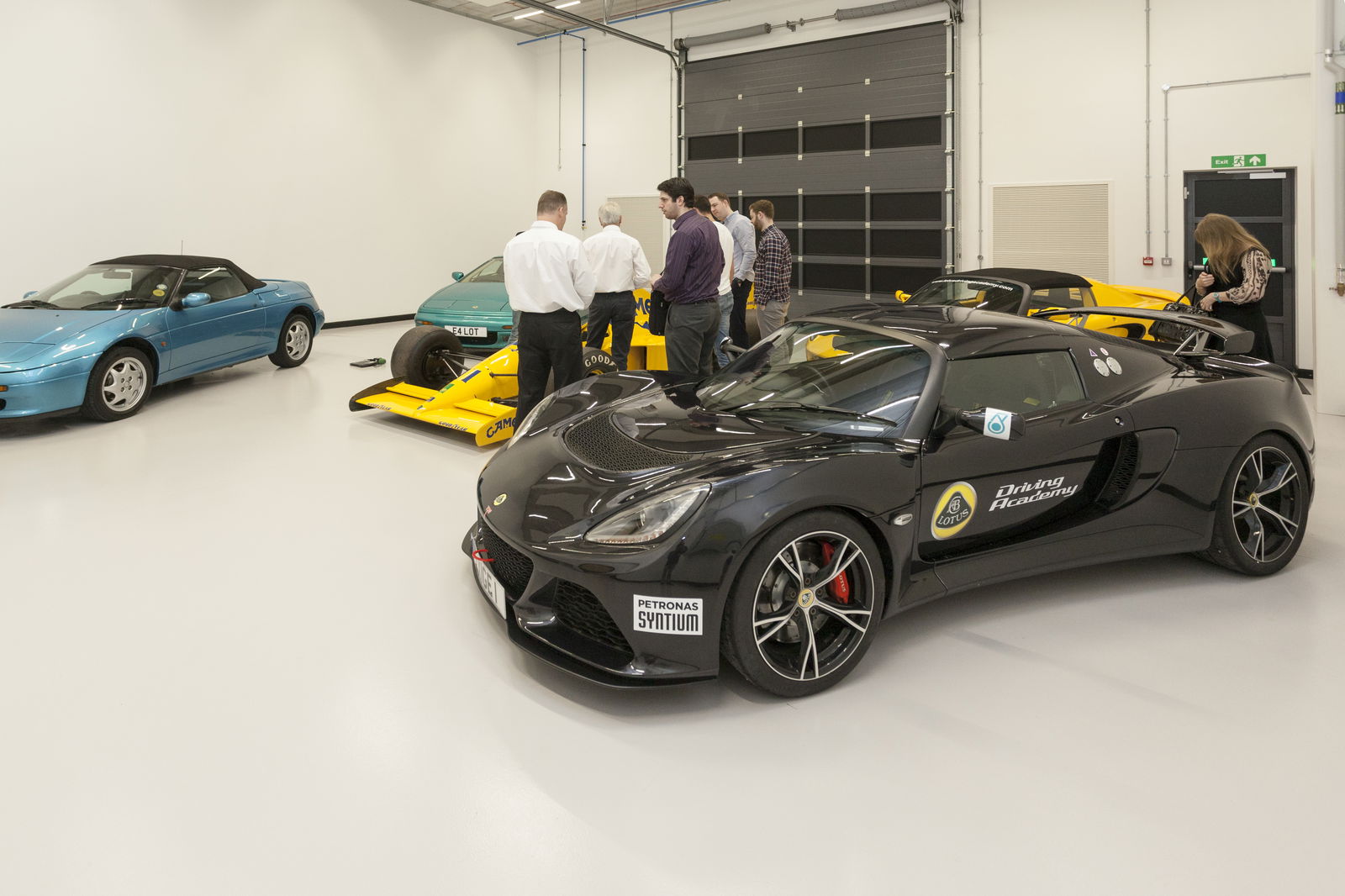
As I sit in the control room, a bank of monitors displays numerous complicated graphs, and figures scroll and flitter across the screens. A couple of engineers sit at the screens to control the environment, and interact with the driver. As I enter the room in which the simulator is sat, I’m hit by freezing cold air. It has to be chilled in here, as 16 high-powered computers run constantly to power the simulator.
There’s around 5700 metres of wiring, 300 data channels, and a wrap-around screen that’s eight metres in diameter. A 1920x1200 projection system runs at 120 Hz, which Ansible claims is five times more powerful than your typical cinema screen.
The cabin’s lid pops open, and I climb inside. This particular simulator has been set up to simulate a front-wheel drive road car, however there are different pods and computer algorithms for different situations, such as rear-wheel drive single seater race cars - remember, the key is to trick the mind into thinking the virtual world is real, and part of that comes from placing you into an appropriate driving seat.
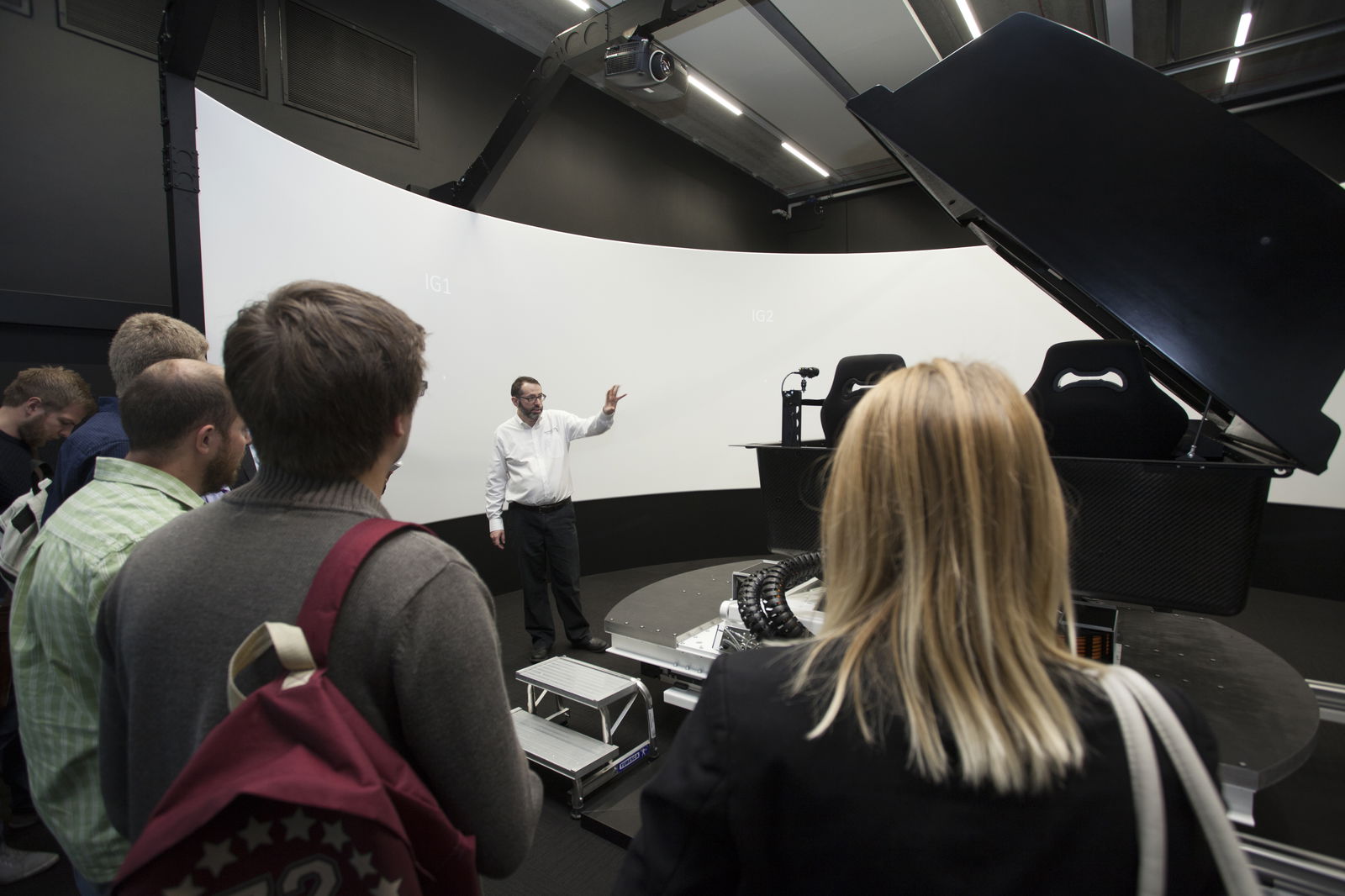
The lid closes and I’m dropped onto a test track. The wrap-around screen is all I can see, even if I look out of the side windows. It’s a bizarre feeling.
As I make my way towards the centre, the first thing I notice is that I feel like I’m sitting a bit too high. As I drive across a section of grass, there’s also no feedback to indicate I’m driving across a different surface, which makes it feel like I’m floating.
The first test involves driving in a circle in second gear, gradually increasing throttle input to induce understeer. It was cool to see how pushing my foot down pushed the car out wide, though I couldn’t really feel anything through the wheel, and I didn’t get much sensation that grip was coming back as I lifted off.
Test number two involved cone slaloms at increasingly high speeds. The way your body moved from side to side was brilliant, but again, I did find it hard to tell exactly what grip levels the tyres had. Before heading to a track, I conducted a 0-100-0mph test, and it’s here that I first began to feel the ways Ansible’s simulator tricks the mind.
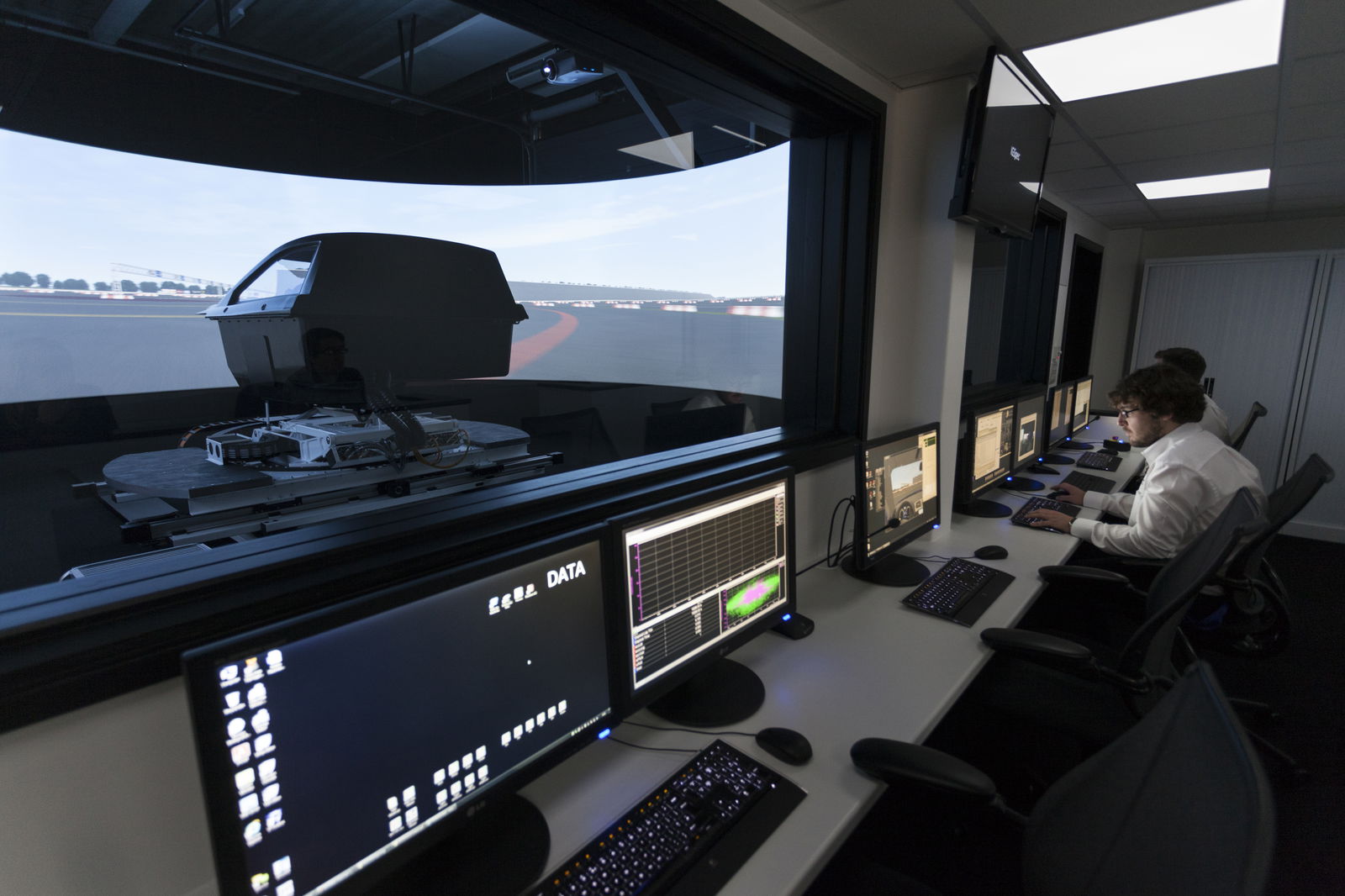
The way this is supposed to work is that by using motion, graphics, haptic (touchy feely) and audio cues, the mind is tricked. Upon braking, the seatbelts tightened, which is supposed to feel like you’re braking hard and being forced forward into your belt. It kind of works, but in my mind I was aware that’s what it was doing (I jumped in the simulator fresh from the technical talk), so it lost some impact. Perhaps once you’ve spent some time in the simulator and start to get in the zone, you forget about that and become more immersed.
On track, I began to feel more mind trickery at work, and it’s here that the motion sickness started to kick in. This track featured elevation changes and a mix of fast, flowing curves and slow, tight corners. As you hit rumble strips, the cabin shakes, and there’s a noticeable kick through the steering wheel, which is fantastic. The main issue I had was that I couldn’t get a sense of my speed, which may be attributed to the afforementioned high driving position. Also, I still couldn’t get much sense of tyre grip, which again made it feel like I was floating; judging braking was difficult due to there not being much feedback through the brake pedal.
If this is supposed to induce less motion sickness than ‘hexapod’ setups I probably shouldn’t give those a go…
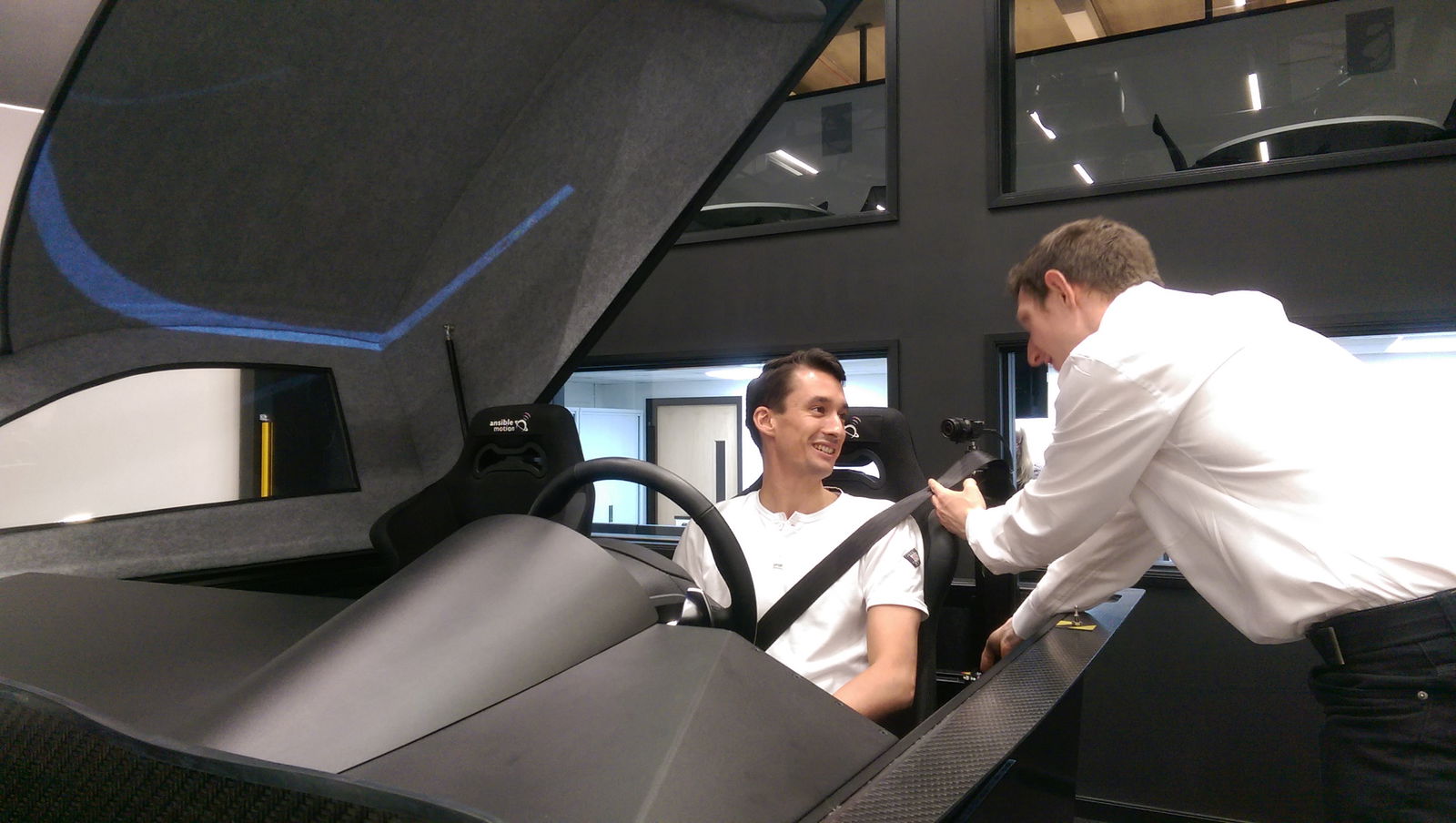
After getting out of the simulator, I admit I was left a little disappointed. I was expecting to be transported away and have my mind blown, but in reality it didn’t feel a whole lot better than other simulators I’ve tried. That being said, I’m not a professional test driver, and judging by the fact Ansible Motion’s client list is expanding - in both road and race markets - they’re obviously doing many things right. I’d love to spend a bit more time with the kit in order to get used to it - just get the sick bags ready, please.

Comments